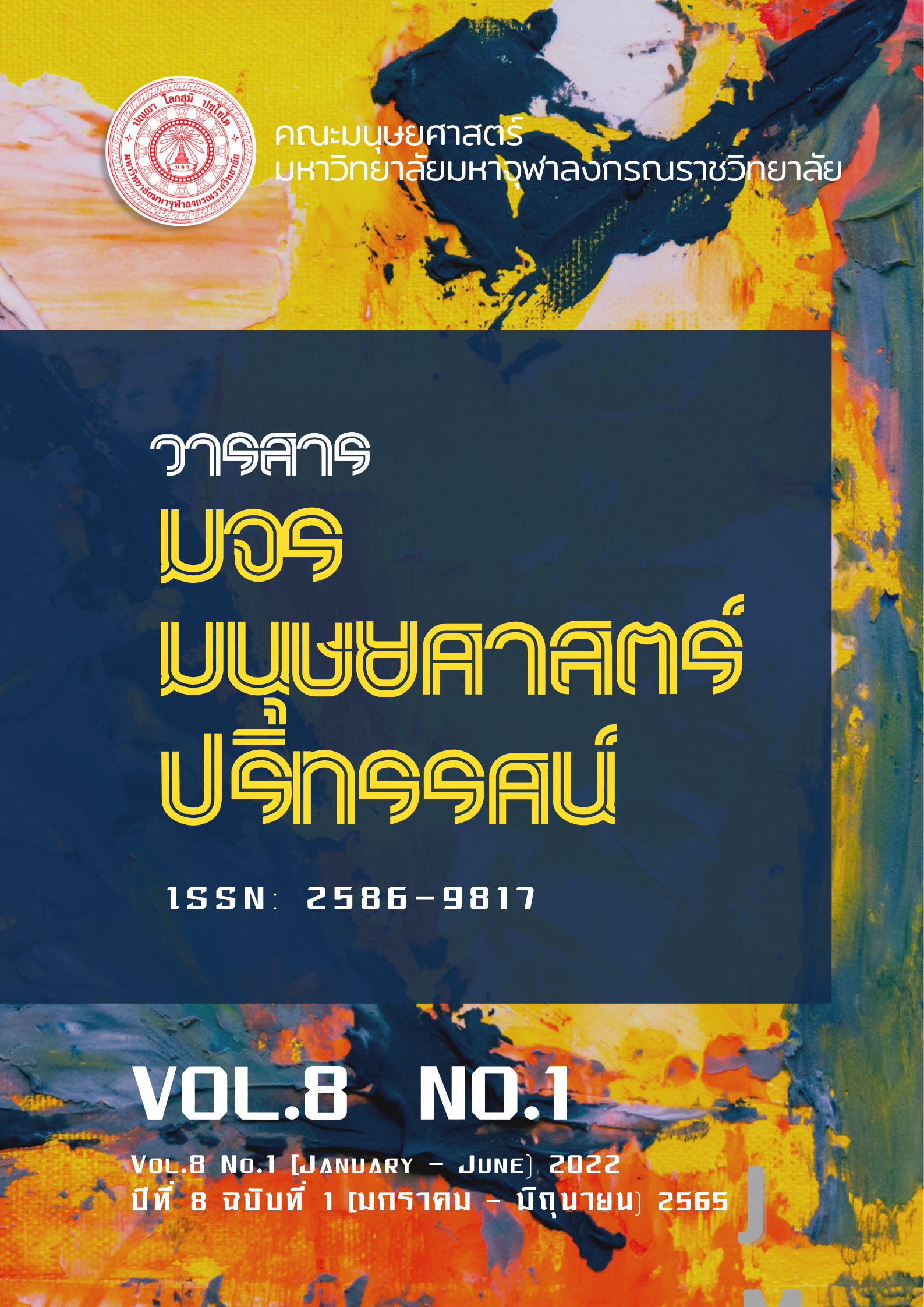การสร้างความสัมพันธ์กับชุมชนตามหลักสังคหวัตถุ 4 ของโรงเรียนคุณภาพประจำตำบลในสังกัดเขตพื้นที่การศึกษาประถมศึกษาร้อยเอ็ด เขต 3
คำสำคัญ:
Schools and Communities, Four Saṅgahavatthu Dhammas, Sub-district Quality Schoolsบทคัดย่อ
การวิจัยครั้งนี้มีวัตถุประสงค์ 1) เพื่อศึกษาสภาพความสัมพันธ์กับชุมชนตามหลักสังคหวัตถุ 4 ของโรงเรียนคุณภาพประจำตำบลในสังกัดสำนักงานเขตพื้นที่การศึกษาประถมศึกษาร้อยเอ็ด เขต 3 2) เพื่อเสนอแนวทางการสร้างความสัมพันธ์กับชุมชนตามหลักสังคหวัตถุ 4 ของโรงเรียนคุณภาพประจำตำบลในสังกัดสำนักงานเขตพื้นที่การศึกษาประถมศึกษาร้อยเอ็ด เขต 3 เป็นการวิจัยแบบผสานวิธี กลุ่มตัวอย่างที่ใช้ในการศึกษาครั้งนี้ จำนวน 268 คน และสัมภาษณ์ผู้ให้ข้อมูลสำคัญ จำนวน 5 คน เครื่องมือที่ใช้ ได้แก่ แบบสอบถาม มีค่าความเชื่อมั่นเท่ากับ 0.95 และแบบสัมภาษณ์แบบกึ่งโครงสร้าง สถิติที่ใช้ในการวิเคราะห์ข้อมูลเชิงปริมาณ ได้แก่ ค่าความถี่ ค่าร้อยละ ค่าเฉลี่ย และส่วนเบี่ยงเบนมาตรฐาน และวิเคราะห์ข้อมูลเชิงคุณภาพด้วยการวิเคราะห์เนื้อหา
ผลการวิจัยพบว่า
- สภาพความสัมพันธ์กับชุมชนตามหลักสังคหวัตถุ 4 ของโรงเรียนคุณภาพประจำตำบลในสังกัดสำนักงานเขตพื้นที่การศึกษาประถมศึกษาร้อยเอ็ดเขต 3 โดยภาพรวมอยู่ในระดับมากที่สุด และด้านที่มีการปฏิบัติสูงสุด ได้แก่ ด้านการประชาสัมพันธ์โรงเรียน รองลงมาได้แก่ ด้านการให้บริการชุมชน ด้านการเสริมสร้างความสัมพันธ์กับชุมชนและหน่วยงานอื่น ด้านการได้รับความช่วยเหลือสนับสนุนจากชุมชน และด้านการร่วมกิจกรรมของชุมชน ตามลำดับ
- แนวทางการสร้างความสัมพันธ์กับชุมชนตามหลักสังคหวัตถุ 4 ของโรงเรียนคุณภาพประจำตำบลในสังกัดสำนักงานเขตพื้นที่การศึกษาประถมศึกษาร้อยเอ็ดเขต 3 ได้แก่ โรงเรียนควรมีการประชุมผู้ปกครองนักเรียน ออกเยี่ยมบ้านนักเรียน และประชาสัมพันธ์เผยแพร่ข้อมูลข่าวสารของโรงเรียนผ่านช่องทางต่าง ๆ อย่างสม่ำเสมอ ควรให้บริการด้านอาคารสถานที่ในการจัดกิจกรรมของชุมชนและอำนวยความสะดวกแก่ผู้มาติดต่อด้วยความสุภาพเป็นกันเอง โดยไม่เลือกปฏิบัติ บุคลากรในโรงเรียนควรมีส่วนร่วมกับกิจกรรมงานบุญประเพณีของชุมชนตามความเหมาะสม โดยไม่กระทบต่อการจัดการเรียนการสอน โรงเรียนควรเปิดโอกาสให้ชุมชนมีส่วนร่วมในด้านต่าง ๆ และโรงเรียนควรมีการประสานงานสร้างเครือข่ายกับหน่วยงานอื่น ๆ ในชุมชน เพื่อร่วมกันพัฒนาโรงเรียนและชุมชนไปพร้อมกัน
เอกสารอ้างอิง
กอบเกียรติ เจริญพานิช. (2540). กิจกรรมของโรงเรียนที่ส่งเสริมความสัมพันธ์ระหว่างโรงเรียนกับชุมชนของโรงเรียนประถมศึกษาในเมืองและในชุมชนจังหวัดเพชรบูรณ์ (วิทยานิพนธ์ศึกษาศาสตรมหาบัณฑิต). มหาวิทยาลัยเกษตรศาสตร์ : กรุงเทพฯ.
กมล กำลังหาญ. (2546). ปัญหาและความต้องการในการสร้างความสัมพันธ์ระหว่างโรงเรียนกับชุมชน กรณีศึกษาโรงเรียนศึกษานารี (วิทยานิพนธ์ปริญญาครุศาสตร์มหาบัณฑิต). มหาวิทยาลัยราชภัฏธนบุรี : กรุงเทพฯ.
ชูชาติ พ่วงสมจิตร์. (2540) การวิเคราะห์ปัจจัยที่ส่งเสริมและปัจจัยที่เป็นอุปสรรคต่อการมีส่วนร่วมของชุมชนกับโรงเรียนประถมศึกษา (วิทยานิพนธ์ครุศาสตรดุษฎีบัณฑิต). จุฬาลงกรณ์มหาวิทยาลัย : กรุงเทพฯ.
เทวินทร์ ก้องเสนาะ. (2552). ศึกษาสภาพปัญหาการบริหารงานความสัมพันธ์ระหว่างโรงเรียนกับชุมชนของโรงเรียนประถมศึกษา สังกัดสำนักงานเขตพื้นที่การศึกษาระยอง เขต 2 (วิทยานิพนธ์การศึกษามหาบัณฑิต). มหาวิทยาลัยบูรพา : ชลบุรี.
บรรเทา กิตติศักดิ์. (ม.ป.ป.). โรงเรียนชุมชน. กรุงเทพฯ : มหาวิทยาลัยเกษตรศาสตร์.
รณกร ไข่นาค. (2560). แนวทางการสร้างความสัมพันธ์ตามหลักพุทธบริหารการศึกษาระหว่างโรงเรียนกับชุมชนในโรงเรียนสังกัดสำนักงานเขตพื้นที่การศึกษามัธยมศึกษา เขต 3 จังหวัดพระนครศรีอยุธยา (วิทยานิพนธ์ครุศาสตรมหาบัณฑิต). มหาวิทยาลัยมหาจุฬาลงกรณราชวิทยาลัย : พระนครศรีอยุธยา.
วิรัช มันตะสูตร. (2548). การพัฒนาการสร้างความสัมพันธ์แบบมีส่วนร่วมระหว่างโรงเรียนและชุมชนของโรงเรียนวัดดงป่าคำ สำนักงานเขตพื้นที่การศึกษาพิจิตร เขต 1 (วิทยานิพนธ์ครุศาสตร์มหาบัณฑิต). มหาวิทยาลัยราชภัฏเพชรบูรณ์ : เพชรบูรณ์.
สำนักงานคณะกรรมการการประถมศึกษาแห่งชาติ. (2543). แนวทางการดำเนินงานของคณะกรรมการสถานศึกษาขั้นพื้นฐาน. กรุงเทพฯ : คุรุสภาลาดพร้าว.
สำนักงานคณะกรรมการการประถมศึกษาแห่งชาติ. (2529). แผนการศึกษาแห่งชาติ พุทธศักราช 2535. กรุงเทพฯ : อัมรินทร์ พริ้นติ้งกรุ๊พ.
สำนักงานคณะกรรมการการศึกษาขั้นพื้นฐาน. (2547). เอกสารประกอบการศึกษาค้นคว้าด้วยตนเอง หลักสูตรผู้ช่วยผู้บริหารสถานศึกษา ตามหลักเกณฑ์และวิธีการพัฒนาข้าราชการครูเพื่อเข้าสู่ตำแหน่งผู้บริหารในสถานศึกษา ปีงบประมาณ 2547. กรุงเทพฯ : สำนักงานคณะกรรมการการศึกษาขั้นพื้นฐาน.
สุนทร ชอบทำดี. (2534). บทบาทของคณะกรรมการศึกษาเกี่ยวกับความสัมพันธ์ระหว่างโรงเรียนกับชุมชน ของโรงเรียนประถมศึกษา สังกัดสำนักงานการประถมศึกษาจังหวัดอ่างทอง (วิทยานิพนธ์ครุศาสตรมหาบัณฑิต). จุฬาลงกรณ์มหาวิทยาลัย : กรุงเทพฯ.
อริญา พึ่งป่า. (2561). การบริหารจัดการสถานศึกษาด้านการสร้างความสัมพันธ์ระหว่างโรงเรียนกับชุมชนหลายสัญชาติของโรงเรียนในสังกัดสำนักงานเขตพื้นที่การศึกษาประถมศึกษาสมุทรสาคร (วิทยานิพนธ์ครุศาสตรมหาบัณฑิต). มหาวิทยาลัยราชภัฏธนบุรี : กรุงเทพฯ.

ดาวน์โหลด
เผยแพร่แล้ว
รูปแบบการอ้างอิง
ฉบับ
ประเภทบทความ
หมวดหมู่
สัญญาอนุญาต
ลิขสิทธิ์ (c) 2022 วารสาร มจร มนุษยศาสตร์ปริทรรศน์

อนุญาตภายใต้เงื่อนไข Creative Commons Attribution-NonCommercial-NoDerivatives 4.0 International License.





